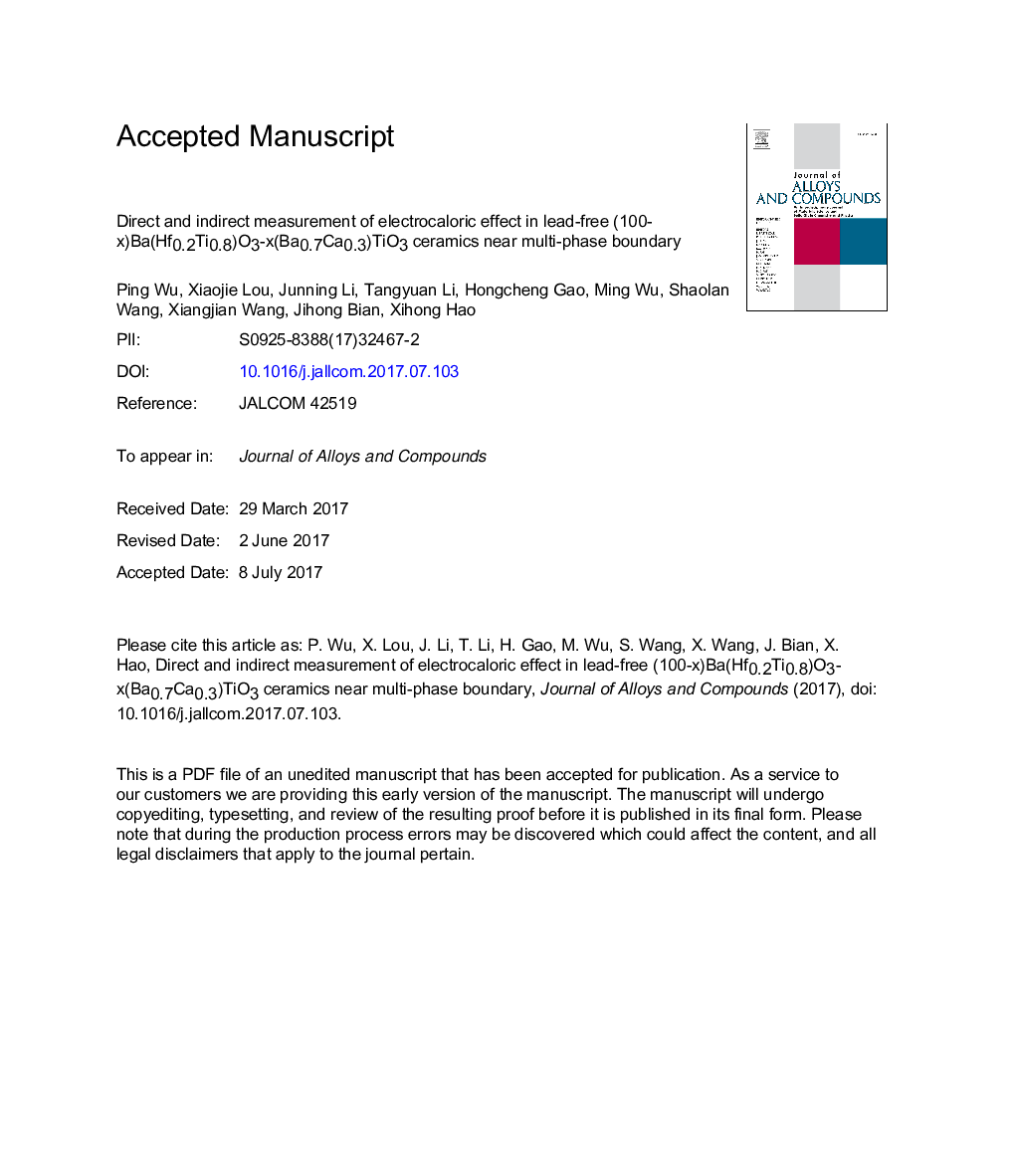| Article ID | Journal | Published Year | Pages | File Type |
|---|---|---|---|---|
| 5458346 | Journal of Alloys and Compounds | 2017 | 28 Pages |
Abstract
In this work, the (100-x)Ba(Hf0.2Ti0.8)O3-x(Ba0.7Ca0.3)TiO3 (BHT-xBCT) ferroelectric ceramics were fabricated by a conventional solid-state reaction method. The electrocaloric effect (ECE) of these ceramics was studied by both indirect and direct methods over a wide temperature range with the composition changing from x = 20 to 50. The most excellent direct ECE occurs in the BHT-50BCT with a good direct ÎTEC = 0.27 K (at 92 °C) under the electric field of 10 kV/cm. What's more, the direct EC effect peaks not only locates at near the Curie temperature, but also at the phase-transition temperatures corresponding to the transitions between different ferroelectric phases. In particular, it is found that BHT-50BCT exhibits a direct ECE anomaly ÎTEC = 0.1 K at 30 °C under an electric field of 10 kV/cm, which can be ascribed to the orthorhombic to tetragonal phase transition, proposing that one can achieve a broad temperature window by tuning the temperature gap between ferroelectric (FE) to paraelectric (PE) boundary and FE-FE boundary. In addition, BHT-30BCT shows good stability of indirect ÎTEC,max/ÎE and a broad ECE peak at a higher electric field, indicating that it is possible for electrocaloric temperature ÎTEC to be tuned linearly by electric field. Overall, our results imply that the BHT- xBCT ceramics are promising candidates for lead-free cooling refrigeration applications.
Keywords
Related Topics
Physical Sciences and Engineering
Materials Science
Metals and Alloys
Authors
Ping Wu, Xiaojie Lou, Junning Li, Tangyuan Li, Hongcheng Gao, Ming Wu, Shaolan Wang, Xiangjian Wang, Jihong Bian, Xihong Hao,
